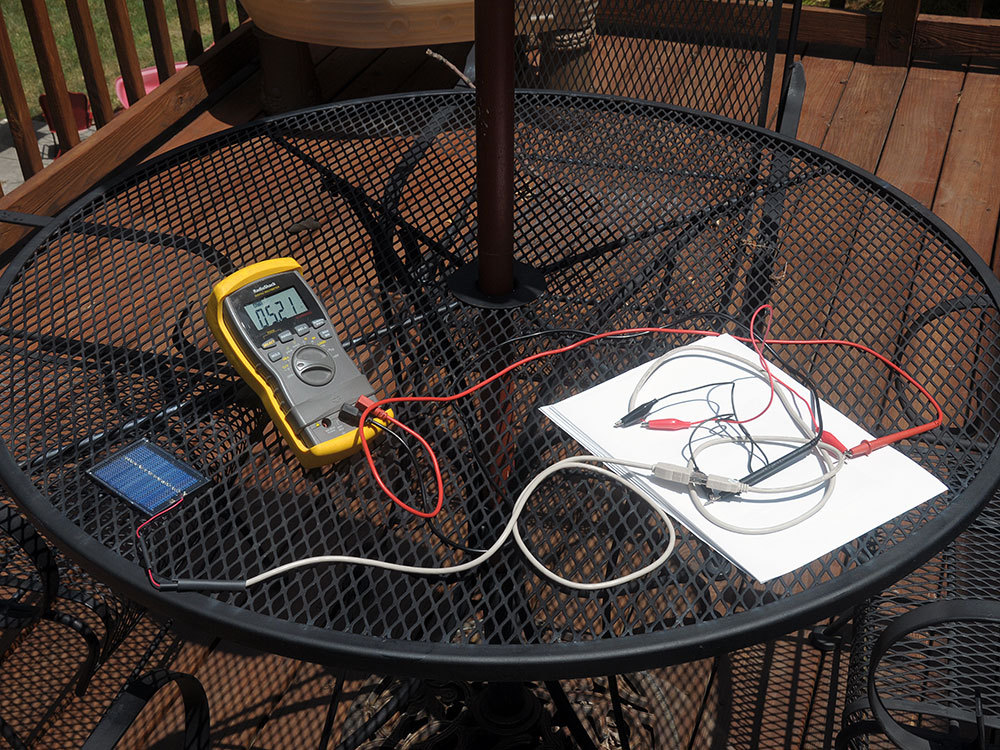Cut a 2-3″ piece of 1/4″ heatshrink tubing and slide it over the cut end of the USB cable.
Cut a similar piece of 1/8″ tubing and slide it over either the red or the black wire coming from the solar cell. This tubing will insulate the wiring connections from each other.
Pick a rectifier diode from the pack; any one of them will do. Solder the diode between the red wires from the solar cell and the USB cable, with its cathode leg (that’s the negative side, marked with the stripe) facing the USB side.
Solder the two black wires directly together.
Solder the smaller, red and black Zener diode across the two wire connections, with its black stripe facing the red wire side.
Slide the heat shrink tubing over the joints and shrink with a heat gun or lighter. (Hold the lighter flame over the tubing, rather than under, and move the tubing around to shrink all spots.) Always put the tubing on first, before you solder!













